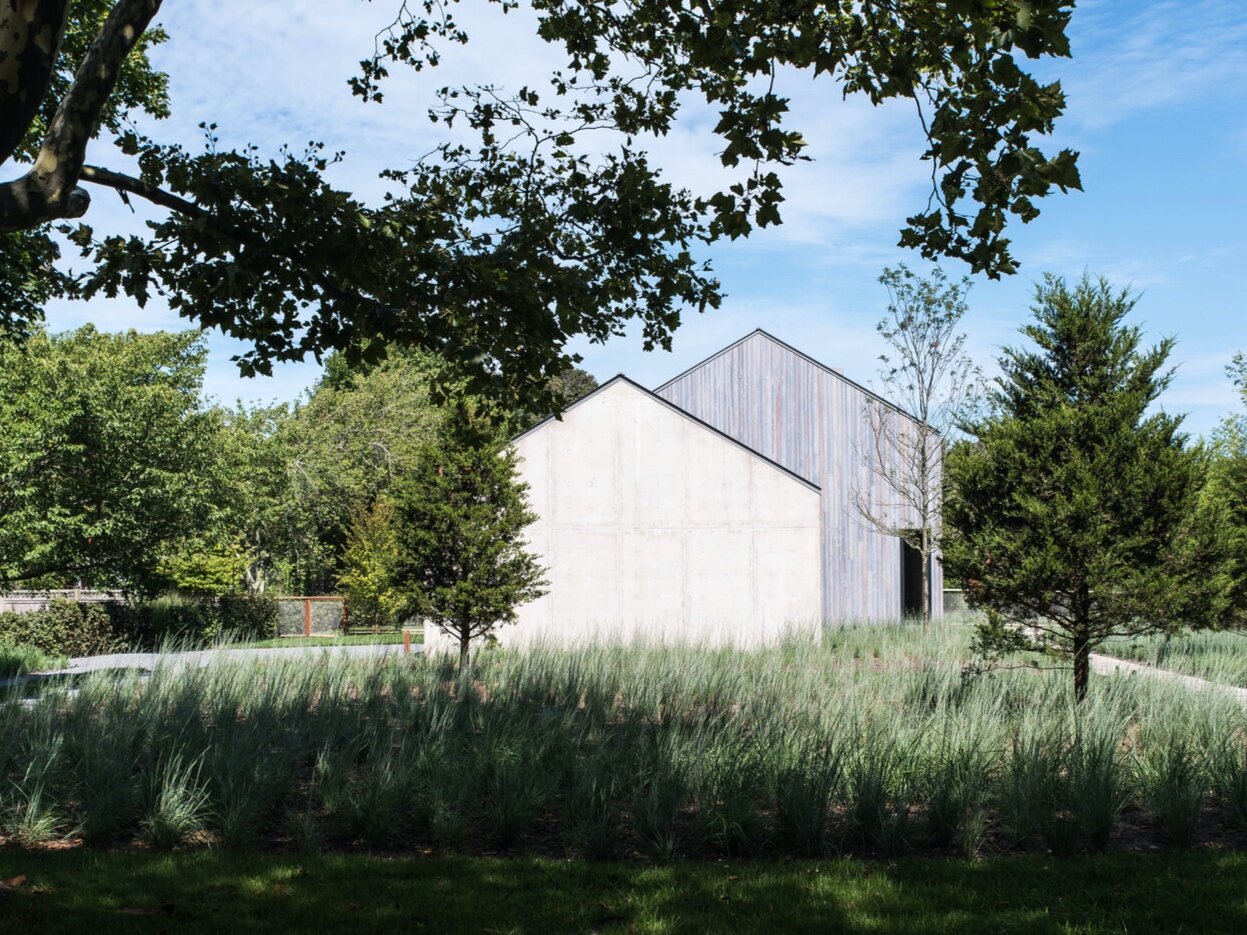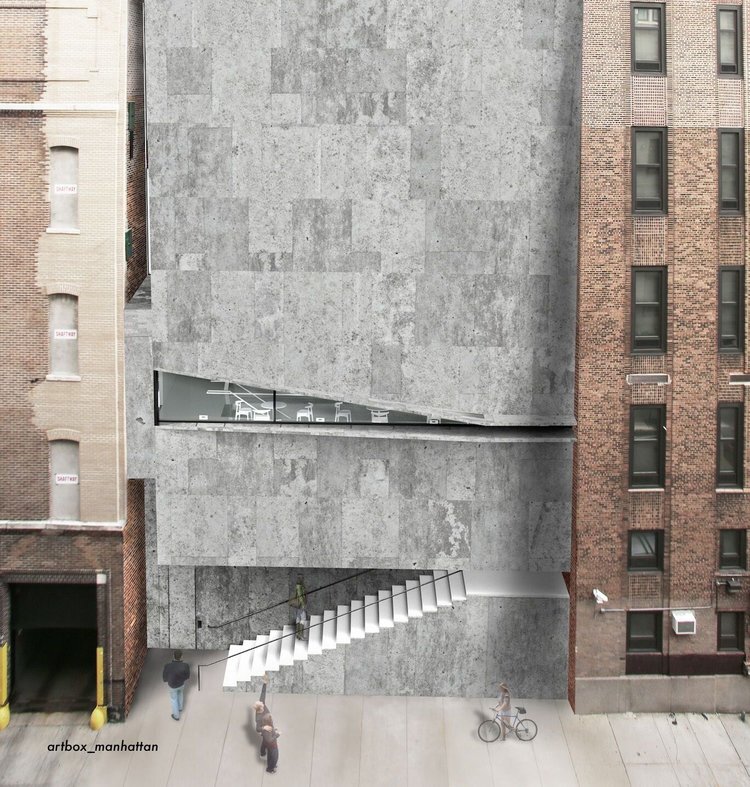Over the past 30 years, we have envisioned, designed and built a diverse range of buildings and spaces, from quick-build, pre-fabricated homes to custom-crafted, private residences; we've designed art installations, commercial and cultural spaces, places of worship, multi-family housing, specialty museums and public spaces. The ‘Arc House’, ‘House in the Lanes’, ‘Amagansett Modular’, and ‘Driftwood House’ are some of the more known examples of our residential work; while the ‘Art Box’, ‘New Herrick Park’, and ‘Park Erratica’ illustrate our ongoing research in community-oriented projects.
We have collaborated with and culled together a team of expert craftspeople, builders, engineers and designers who share our enthusiasm and expertise in bringing a variety of complex projects to life — and who are now part of our larger team of experienced and reliable professionals.
Our built work is dotted in numerous locations on the East End of Long Island (Hamptons), in New York, and Germany; and we have envisioned projects for New Orleans, China, Austria, Kenya, Papua New Guinea, and Chile.
ArtBox, Manhattan, NY
New Herrick Park, East Hampton, NY
Residences in the Hamptons
We built our first house in East Hampton in 1996 with John Caramagna, a master builder who also built the houses of architect Charles Gwathmey —and many other notable architects— on the East End of Long Island (including Charlie’s famous house for his mother on Bluff road). John well-understood the impact of the local —and coastal— environment of the Hamptons on his buildings; and used specific methods to manage the effects of such things as the salty and humid air, the porous sandy soil, and weather patterns —from nor’easters to snow dumps— into the construction of his homes. To this day, the more experienced and accomplished builders of the area, employ a variation of these tried and tested materials and methods, yielding buildings that last many generations. Of course, the introduction of certain new materials alter this landscape, but core principles have so far remained intact.
We too, in our work, rely on the use of materials and methods of construction that last well beyond their initial picture-ready newness; that weather naturally; require less maintenance; and age gracefully.
This inclination to create buildings that last and seem timeless (not belonging to a trend or style) goes beyond mere construction techniques, however. We like our buildings to both belong to their settings and to create anew. This interplay, between old and modern, tradition and experiment, informs our decisions in the process of design.
Permitting
Each East End township follows both the New York State Residential Building Code and their own set of zoning laws. Understanding these is paramount in both the design process, and the creation of construction documents that will receive approvals from the various agencies involved in the permitting process. Whether we are working with the DEC, ZBA, DOB or any other agency that may have jurisdiction over a property, we have the experience of successfully navigating extremely complex projects through permitting, and eventual completion.
City & Nature
Working on the East End of Long Island between the Long Island Sound and the Atlantic Ocean, amongst estuaries, wetlands, and farmland, and above two aquifers from which we pump our drinking water, as well as in the highly dense environment of New York City, gives us a critical opportunity and challenge to carefully observe the relationship between human settlement and nature, and the long-term impact of buildings on the environment.
Between our studio in the Hamptons and our satellite office in the heart of New York City, the highest density large city in the country, we closely observe the distinctions of high-density living in multifamily high-rises and low-density living in single family homes. We experience first hand the real and measurable effect of buildings on our drinking water, wetlands, natural barriers, plant life, and air quality and the critical importance of making real improvements. We strive to tread our grounds with care while recognizing the inherent challenge of building sustainably in an area dominated by single family residences.
Whether working in the city or in rural areas, our work is informed by the contrasting interdependence of Nature and City; making the built (or the building) in our work a mere component, albeit a vital one, of a total environment.
Maziar Behrooz
Maziar is a graduate of Tulane, and Cornell Schools of Architecture and the Institute for Architecture and Urban Studies.
He has served as an Advisory Board Member at the Tulane School of Architecture, a guest curator at the Parrish Museum of Art, and president of the AIA Peconic.
Maziar's work has been exhibited at the Salomon Contemporary Gallery, the Parrish Museum of Art Road Show, the Outsider Art Fair, and the Australian National Maritime Museum.
View of Manhattan and the U.N. with 'Sitting Statue'
A Note on Sustainability
We don't just design buildings; we create integrated environments. In fact, the built (or the building) in our work, in particular in our recent design projects, is a mere component, albeit a vital one, of a total environment. In the case of our short-listed proposal for a 600 person Baha'i Temple at the foot of the Andes, for example, the experience of the complete cycle of nature and nature-based uses led to an architectural design that relies on the geological features of the site for its spatial definition and completion. This fundamental shift in attitude, a reversal of the conventional relationship between buildings and nature whereby buildings are a component of much larger Architecture of the Environment, characterizes our approach to design.
In 2008, we built the first green-roof in Montauk. This minimized storm water runoff, added additional insulation, and made the roof an inviting and livable space. For our next project, the Arc House, we went beyond planting sedum on the roof and buried much of the structure within the landscape. This took advantage of the naturally temperate ground temperature and substantially decreased the house’s energy consumption. In addition to the naturally regulated subterranean part of the house, the rounded shape of the above-ground portion of the structure created a natural convection in the space and stabilized the temperature of the room. Most recently, for the the Sayres House and Hanging Gardens, we created multiple landscaped terraces adding more green-space to the property than we removed by building the structure. As architects, our specific role is to demonstrate alternative methods of planning and construction that promote our total ecological philosophy while helping preserve, sustain and regenerate the environment.
As practitioners, our challenge is to apply this attitude to every project, large or small, affordable or luxurious. While the physical results vary, we consistently aim for the maximization, wherever possible, of contiguous natural habitats. By clustering buildings and increasing managed landscapes, we leave nature to perform its self-healing, self-cleaning processes. We like to explore site layouts that reduce or otherwise draw attention to the impact of buildings on the environment. In our proposal for 90 units of affordable housing in Norwalk, Connecticut, for example, alternative building technologies are integrated with a site plan that reverses suburban and wasteful development while creating a model for the regeneration of a neighborhood. The use of passive systems which take advantage of solar orientation, wind direction, and landscaping are fundamental to our decision making process while the examination of efficient and alternative materials and building technologies is a fulfillment of that promise.
To find out more, or to discuss your next project, send us an email.
Landscaped Terraces and sunken driveway at the Arc House, East hampton, NY.











